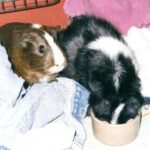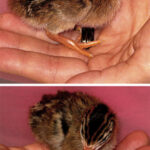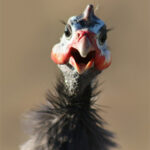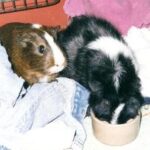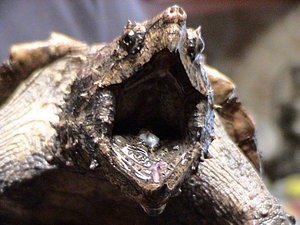The Patagonian mara, also known as the Patagonian cavy or Patagonian hare, was completely unknown to American animal lovers until the airing of Sir David Attenborough’s landmark television series “The Trials of Life” (1992). Mara mothers were featured trying desperately to allow only their own babies to feed instead of the vast crèche of hungry babies that mobbed every lactating female in sight.
From then on, people wanted to know more about the mara. By 2005, it had entered the exotic pet market in North America. Unfortunately, despite being related to established pet rodent species like chinchillas or guinea pigs, maras make bad pets. Their dietary and housing needs are difficult. They scare easily and can get injured as a result. Injuries are common to their long, skinny legs. They also can escape their pens or kennels and cause havoc in the neighborhood, which is what happened in Tulsa, Oklahoma in 1981. Most veterinarians have no idea how to treat one.
General Description
Patagonian maras look like a long-legged guinea pig with a face similar to a capybara, the world’s largest rodent and also a South American native. They have cobby bodies like guinea pigs or capybaras and pointed ears like a dwarf rabbit. At first glance, they appear like dik-diks or the miniature tusked deer of Russia. Those long legs can help the mara jump about three feet high, but some maras reportedly can jump five feet. Fencing for captive maras needs to be at least six feet high. If they escape, good luck catching them. Maras can reach speeds up to 35 miles per hour.
In zoos, maras can live up to 14 years. They live to about 7 years in the wild. Males, larger than females, can tip the scales at 35 pounds – heavier than a beagle. Females may weigh as little as 10 pounds. Maras are agouti colored, with pale bellies, buff-colored legs and a silvery grey topline. They can grow some tufts of white on their hind legs near their rumps. They sport long black whiskers which should never be trimmed, as maras rely on their whiskers to help get around. They also sport long claws on their hind feet which are usually sharper than the claws on the forefeet.
Feeding
Maras can eat guinea pig pellets in captivity, along with fresh fruits, vegetables and fresh grass hay. Captive maras enjoy sweet potatoes, Romaine lettuce, apples, squash and fresh dandelion greens. Out in the wild, maras eat whatever plants they can and sometimes dried up insects. Like other rodent species, their front teeth keep growing. Unless the mara has access to hard foods to gnaw on, the teeth will become overgrown to the point where the mara cannot eat. Newborn maras nurse off their mothers until they are about two to three months old.
Small treats can be used to help train maras. Training sessions should only be a few minutes long to keep the animal’s attention. Some pet maras have been leash-trained and litter trained. The urine smell is quite mild in comparison to a tom cat’s urine. The mara may urinate and defecate near its food dishes, even if it is litter trained.
Sources
“The Trials of Life.” (1992)
“The Unique Ones.” Rebecca Sweat. “Critters USA 2007 Annual.” Bow Tie Press; 2006.
About.com. “Patagonian Cavy: Feeding and Care.” Adrienne Kruzer, RVT


